Breast Lift
Breast Lift Surgery in Carmel, IN
Dr. Barry Eppley is an experienced and highly skilled breast lift surgeon who takes pride in closely listening to his patients and helping them to understand how to go from saggy breasts to more uplifted and fuller ones. To help patients achieve their breast shape goals, he offers differing types of breast lifts and a wide selection of breast implants. You can view the results of some of Dr. Eppley’s breast lift patients by visiting his before and after breast lift photos section.
BREAST SAGGING/BREAST PTOSIS
For many women, the shape of their breasts is just as important as their size. Women who are bothered by sagging breasts as a result of pregnancy, weight loss, or the aging process can achieve an improved breast shape. Poor breast shape can be helped by a surgical technique known as a breast lift or mastopexy. This surgical procedure is specifically designed to lift and reshape the breast to a more youthful, uplifted and rounded appearance. The size of the nipple and surrounding areola (dark pink skin around the nipple) can be simultaneously reduced as the breast is lifted. It is important to understand that a breast lift procedure will not enlarge the size of the breasts. Therefore, the mastopexy procedure is often performed in conjunction with breast implants to provide a fuller appearance to the upper portion of the breasts or an overall larger breast size as they are lifted.
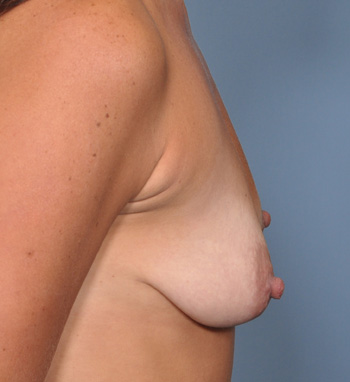
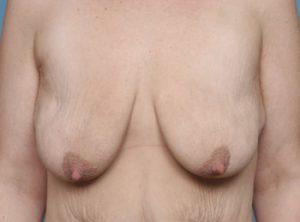 What is extremely important for every woman to realize about breast lift surgery is there are different operations for differing amounts of breast sagging. (also known as breast ptosis) Breast ptosis is rated based on where the position of the nipple sits at relative to the level of the lower breast fold. (inframammary crease) On a scale of Grade I to IV, the amount of breast sagging is determined. What type of breast lift and whether an implant would also be helpful is determined largely on what grade of breast ptosis one has.
What is extremely important for every woman to realize about breast lift surgery is there are different operations for differing amounts of breast sagging. (also known as breast ptosis) Breast ptosis is rated based on where the position of the nipple sits at relative to the level of the lower breast fold. (inframammary crease) On a scale of Grade I to IV, the amount of breast sagging is determined. What type of breast lift and whether an implant would also be helpful is determined largely on what grade of breast ptosis one has.
AMOUNT OF BREAST LIFT vs. AMOUNT OF BREAST SCARS
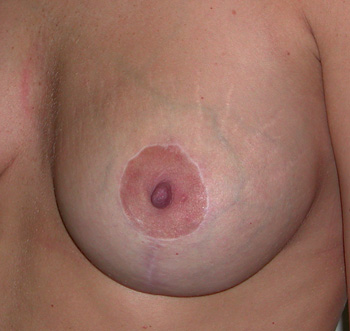 When considering breast lift surgery, there are two important considerations…the amount of lift and reshaping and the location and extent of the scars. The more scar that is created the greater the breast lifting and reshaping that will occur. The aesthetic trade-off of the scars is an unavoidable issue with breast lift surgery. There is really no such thing as a ‘minimal scar’ breast lift that really lifts the breasts to a noticeable degree.
When considering breast lift surgery, there are two important considerations…the amount of lift and reshaping and the location and extent of the scars. The more scar that is created the greater the breast lifting and reshaping that will occur. The aesthetic trade-off of the scars is an unavoidable issue with breast lift surgery. There is really no such thing as a ‘minimal scar’ breast lift that really lifts the breasts to a noticeable degree.
TYPES OF BREAST LIFTS
There are four basic types of breast lifts. The excision and tightening/lifting of the skin can be limited to just above or around the nipple or extend downward into the lower pole and inframammary crease of the breast. The scars left behind for each type of breast lift has led to many of their names that describe the location on the breast mound of these scars.
SUPERIOR CRESCENT BREAST LIFT (Type 1)
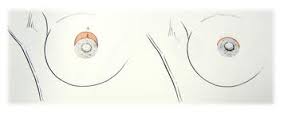 Type I is not really a breast lift but a nipple lift. Known as a superior crescent mastopexy (SCM), a half-moon shaped piece of skin is removed along the upper areolar skin margin. This will change the position of the upper margin of the areola by about 1 cm. It is primarily used in breast augmentation when there is slight breast sagging and only a change in the nipple position is really needed to improve the result, the breast implant does the rest.
Type I is not really a breast lift but a nipple lift. Known as a superior crescent mastopexy (SCM), a half-moon shaped piece of skin is removed along the upper areolar skin margin. This will change the position of the upper margin of the areola by about 1 cm. It is primarily used in breast augmentation when there is slight breast sagging and only a change in the nipple position is really needed to improve the result, the breast implant does the rest.
CIRCUMAREOLAR or DONUT BREAST LIFT (Type 2)
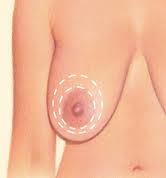 A Type II breast lift is known as a circumareolar or donut mastopexy. An eccentric segment of skin is removed around the areola to provide a slight amount of nipple lift and central breast skin tightening. Like a Type I breast lift, its use is primarily to help breast augmentation results. It is not an effective breast lift despite the appeal of a scar that stays along the areolar margin. It is also prone to areolar scar widening as all the tension of the tightened breast skin is around the nipple.
A Type II breast lift is known as a circumareolar or donut mastopexy. An eccentric segment of skin is removed around the areola to provide a slight amount of nipple lift and central breast skin tightening. Like a Type I breast lift, its use is primarily to help breast augmentation results. It is not an effective breast lift despite the appeal of a scar that stays along the areolar margin. It is also prone to areolar scar widening as all the tension of the tightened breast skin is around the nipple.
VERTICAL or LOLLIPOP BREAST LIFT (Type 3)
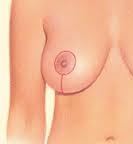 A Type III breast lift is known as a vertical or lollipop lift with the scar running around the areola and vertically down to the inframammary fold. It starts out as a vertical elliptical skin removal and the nipple position moves up to the apex of the superior ellipse. The lower pole of the breast is tightened significantly by the lower end of the elliptical skin excision.
A Type III breast lift is known as a vertical or lollipop lift with the scar running around the areola and vertically down to the inframammary fold. It starts out as a vertical elliptical skin removal and the nipple position moves up to the apex of the superior ellipse. The lower pole of the breast is tightened significantly by the lower end of the elliptical skin excision.
ANCHOR or FULL BREAST LIFT (Type 4)
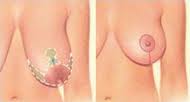 A Type IV breast lift has the same scar pattern as a breast reduction, an inverted T or anchor shape, but without the removal of any breast tissue. A type IV breast lift provides the greatest amount of breast lifting and reshaping effect. With this lifting technique, all dimensions of the breast mound are changed and the breast mound moved upward to the greatest amount that is possible.
A Type IV breast lift has the same scar pattern as a breast reduction, an inverted T or anchor shape, but without the removal of any breast tissue. A type IV breast lift provides the greatest amount of breast lifting and reshaping effect. With this lifting technique, all dimensions of the breast mound are changed and the breast mound moved upward to the greatest amount that is possible.
DO I NEED AN IMPLANT WITH MY BREAST LIFT?
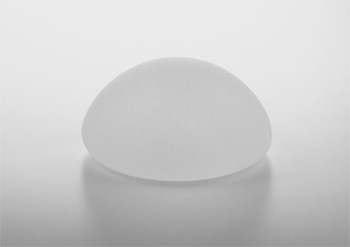 While a breast lift can lift up and reshape the breast mound, it does not give the breast more volume. It may seem so initially with the immediate upper pole fullness due to the breast mound being pushed upward. But this upper pole fullness is temporary and will settle quickly with a resultant flattening of the upper breast mound. Because of this natural settling phenomenon, many breast lifts need an implant to both add volume and ensure that some upper pole fullness remains long after the breast tissue settling has happened.
While a breast lift can lift up and reshape the breast mound, it does not give the breast more volume. It may seem so initially with the immediate upper pole fullness due to the breast mound being pushed upward. But this upper pole fullness is temporary and will settle quickly with a resultant flattening of the upper breast mound. Because of this natural settling phenomenon, many breast lifts need an implant to both add volume and ensure that some upper pole fullness remains long after the breast tissue settling has happened.
The majority of breast lifts are done with an implant to maintain a better breast shape. The question in implant size selection is whether one just wants more persistent upper pole fullness (smaller implant) or an overall larger breast (bigger implant).
SCARLESS BREAST LIFT
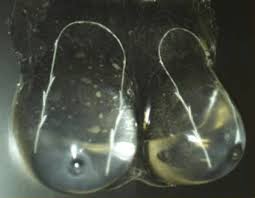 While there is not a truly scarless or incisionless breast lift operation, there is a new internal support device that has recently become available. Known as the Refine breast suspension system, this is an internal soft and flexible suture-mesh-anchor system that is percutaneously inserted. It provides the breast tissues with an uplifting support. It is an FDA-approved 3-part polyester device that engages the breast tissue to help hold it up. This is designed to be used in conjunction with traditional breast lifts to maintain upper pole fullness or in conjunction with breast augmentation to provide a little bit of a lift. It is not a stand alone device that will achieve significant breast lifting, it is an adjunctive device to make the lift or implant operation better.
While there is not a truly scarless or incisionless breast lift operation, there is a new internal support device that has recently become available. Known as the Refine breast suspension system, this is an internal soft and flexible suture-mesh-anchor system that is percutaneously inserted. It provides the breast tissues with an uplifting support. It is an FDA-approved 3-part polyester device that engages the breast tissue to help hold it up. This is designed to be used in conjunction with traditional breast lifts to maintain upper pole fullness or in conjunction with breast augmentation to provide a little bit of a lift. It is not a stand alone device that will achieve significant breast lifting, it is an adjunctive device to make the lift or implant operation better.
In addition to performing breast lifts, Dr. Eppley is skilled at a variety of other breast procedures, including helping breast augmentation and breast reduction patients achieve their desired breast contour.
Breast Lift – Before Surgery
A breast examination, photographs, as well as mammagrams are usually required as part of the work-up for surgery. The amount of ptosis (breast sagging) and the relationship of the nipple and areola to the breast mound is measured and serves as an important determinant of the type of breast lift procedure. There are numerous types of breast lift (mastopexy) procedures which, in the end, differ by the location and amount of the scars that they create. The four basic types include a nipple lift, a donut lift, a lift with only a vertical scar and a combined vertical and horizontal scar type breast lift for severe forms of breast sagging. As the amount of breast sagging increases, so does the amount of skin that must be removed and the more extensive the breast scars will be.
Medications that contain aspirin should be avoided for two weeks prior to surgery to minimize the possibility of excess bleeding during and after surgery. Women who want to breast feed after surgery should discuss this with their surgeon as the ability to do so after surgery may vary dependent upon the type of procedure performed.
Breast Lift – Operation
A breast lift is generally performed as an outpatient under general anesthesia. The differing types of breast lift procedures may vary from incisions across the top portion of the areola (superior crescent technique for minimal lifting), an incision completely encircling the areola (circumareolar technique for moderate lifting), or incisions encircling the areola and extending down to the lower breast fold (vertical or inverted-T techniques) for more extensive lifting.
The most commonly performed breast lift technique used involves a vertically-oriented ellipse of skin made on both sides of the breast around the nipple. The nipple and underlying breast tissue are then repositioned into a new higher location and the skin is brought together and closed underneath the nipple, creating a vertical scar down from the nipple. All incisions are closed with dissolvable sutures under the skin and taped at the end of the procedure. Drains are not usually used for breast lifts. A supportive bra is the external garment applied for support.
When breast enlargement is needed as well as breast lifting, an implant can be placed underneath the muscle of the chest wall at the same time through the same incisions as the breast lift. Breast lift procedures typically take about two hours or more to complete which will be longer if breast implants are simultaneously placed.
Breast Lift Recovery
At the completion of surgery, the patient will have a surgical bra placed over the taped incisions. Patients are discharged to home after recovery from the anesthetic. Pain is usually quite minimal unless an extensive procedure is performed or breasts implants are concurrently placed which will cause some muscle tenderness. Swelling and bruising, although present for one to two weeks after surgery, is usually not severe. Patients should limit their physical activities to avoid strenuous exercise or overhead lifting for several weeks despite how little pain one may have.
No sutures need to be removed as they are all under the skin and are dissolvable. Numbness of the breast skin or nipple may be present but is usually temporary. Scars from the incisions, although permanent, will fade significantly in time. It is important that topical scar therapy be used between 3 weeks and 3 months after surgery for optimal healing and fading of the breast scars.
Complications such as infection and bleeding are quite uncommon. Minor delayed healing of some of the incisions may occur but will eventually progress to complete healing, usually within the four to six weeks after surgery. The complexity of the breast lift procedure, particularly when used with an implant, may necessitate a second surgery to optimize the shape between the two breasts or the resultant scars. Such revisional surgery is needed in about 20% of the cases and is much more likely when the amount of ptosis (sagginess or hanging if the breasts) is significant prior to surgery. The most common need for revision is due to asymmetry between the two breasts, differences in the size and position of the nipples, and other concerns associated with breast implants. It is also very important to understand that breast lift procedures, while often producing dramatic changes in the appearance of the breasts after surgery, does not completely prevent the continued events of gravity over time. Therefore, some degree of recurrent sagging will eventually develop in most lifted breasts, particularly in those patients who do not receive an implant with their lift.

North Meridian Medical Building
Address:
12188-A North Meridian St.
Suite 310
Carmel, IN 46032
Contact Us:
Phone: (317) 706-4444
WhatsApp: (317) 941-8237
